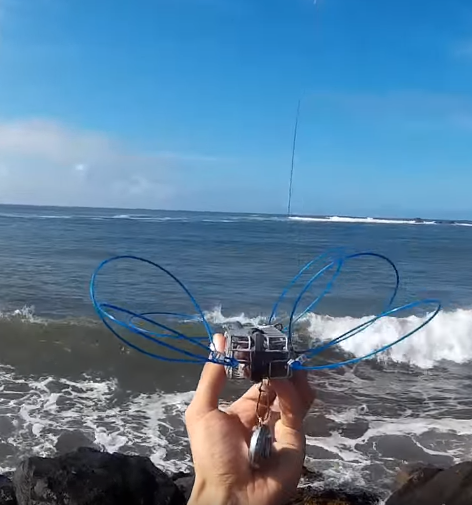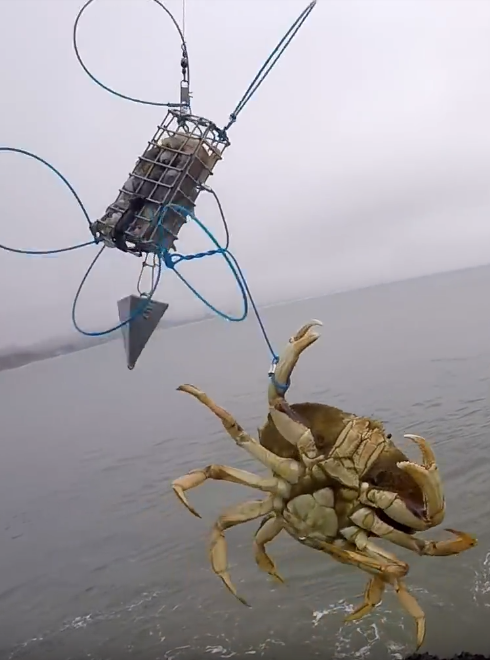The Ultimate Guide To Crabbing with Snares
What is a crab snare?
A snare is basically a trap that tangles up the crab in such a way to prevent escape. It is made up of a small bait box with loops of monofilament attached to it. There are anywhere from 4 to 6 to even 8 loops connected to the bait box. When the crab goes in and tries to feed on the bait, its long, lanky legs get tangled within the loops. The loops are able to decrease in size similar to a noose and this is the essential trapping mechanism the snares employ. More on this later.

How to catch crabs using the snare?
The snare needs to be attached to the end of a line, preferably a fishing line that is colored so that it is much more visible in the water. Crabs won’t be spooked by the color of the line so don’t you worry. The line can originate from a fishing rod or just be detached and freely flowing. As far as what type of fishing line you should use, a 30-40 pound rated line should be strong enough to hold the snare and the crab with it. Braided line like Power Pro Super braided fishing line
is great compared to monofilament because when monofilament gets nicked, it tends to break easily whereas braided does not.
Let’s focus on using a fishing rod as this is the most popular method. This is because using a fishing rod expands the areas in which you can reach. You can crab off a pier, from the beach, from a bridge, etc. You cast it the same way you cast when you go fishing. Try not to cast onto rocks. Cast to the sandy bottom for the best results. Crabbing with snares and a fishing rod is kind of like an advanced version of the line and net method.
Since the snare trap (with/without crabs) is not a smooth, fluid shape, they generate a significant amount of drag under the water. Also, depending what type of crab you are catching, they may weigh up to 2-3 pounds each (like Dungeness crab) so a medium action, medium/heavy power rod would be sufficient for this application. A strong, sturdy rod like this Ugly Stick (Shakespeare Medium Action Ugly Stik Bigwater Combo) should work fine. After you’ve casted the snare out, making sure you’ve reeled in the slack, you can feel the crabs nibble on the bait just as fish do. It is possible that the rod tip may bend as well but this is rare. Let the crab settle in the trap after you get the initial nibbling feeling. You should then apply some tension to the line by pulling/reeling. If done correctly and with a little luck, this action will cause the monofilament loops to constrict with some part of the crab inside of the loop. You always want to have consistent tension on the line and never jerk, pump, or swing the rod. This is important because you don’t want the crab to separate from the snare and you don’t want the loops to unravel.
Rigging your fishing rod/snare setup
Set up the snare by first filling the bait box up with bait. My favorite bait is razor clam but learn what else you can use by reading about crabbing bait here. Attaching a weight or sinker to the bait cage is optional but recommended to keep the snare from walking with the water current. A 2-3 oz Sputnik sinker is perfect.
Make sure the sinker is attached far enough away from the bait box so that it doesn’t get tangled up in the snares as well. Tangling the sinker will decrease your chances of making a successful catch. You can utilize a simple snap swivel and line to securely connect the sinker to your bait box and allow for easier disassembly.
Ok. So you’ve filled the bait box and attached your sinker. Now, you can attach your fishing line to the bait box using whatever knot-tying method you prefer. I recommend a surgeon’s knot:
I prefer to attach it to the side of the box where the snares are connected to and not the top or bottom. This is because once you start reeling, more of the movement is in line with constricting those loops giving you a much better chance of snagging a crab appendage.
Casting the trap out and catching some crabs
Once you’ve finished rigging your snare, you can cast the snare out to lure in the crabs. Set it out there for 8-10 minutes or until you feel nibbling. The tricky part to catching crabs this way is reeling the line in. It takes time to learn how fast you should reel and the perfect amount of tension to use. Too fast and you might miss the crab. Too slow and you might spook the crab and allow it to run away. At the same time, the monofilament loops may not constrict functionally. You can test how this works by reeling in out of the water with something in the snares. Trial and error along with patience will be the best teacher.

Save me! – Dungeness Crabs
What snares to use?
The Danielson crab snares are decent for the price. If you are looking for an inexpensive, but fully functional product, you cannot beat the Danielson crab snare. The bait basket is rubber coated and will hold up in a salt water environment. Check the Crabbing HQ store for some quality snares that you can get today!
The better, higher quality snares should be the rectangular-shaped, with thin, strong monofilament loops. Check that the movement of the loops are loose and do not get stuck. The bait box should have a high weight to strength ratio. Visit your local fisherman’s store for similar designs.
Rules and regulations
Not surprisingly, there are specific rules and regulations for your area regarding the use of snares. California limits the number of loops on the trap and in some regions, crab with snares is banned. Check with your local department of wildlife to be sure. Why you ask? These tricky traps are capable of tearing off a crab’s legs or pincers. Dismembering the crab is considered inhumane and can lead to a high mortality rate for the crab. You MUST check your local department of fish and wildlife you ensure that you are abiding by their rules or risk a hefty fine. Make sure snares are allowed. Keep in mind there may be restrictions on how many loops the trap may have as well. Crabbing is meant to be fun. Don’t spoil it by getting into legal trouble.
As always, happy crabbing! Watch some YouTubers nab some delicious crustaceans using snares.
